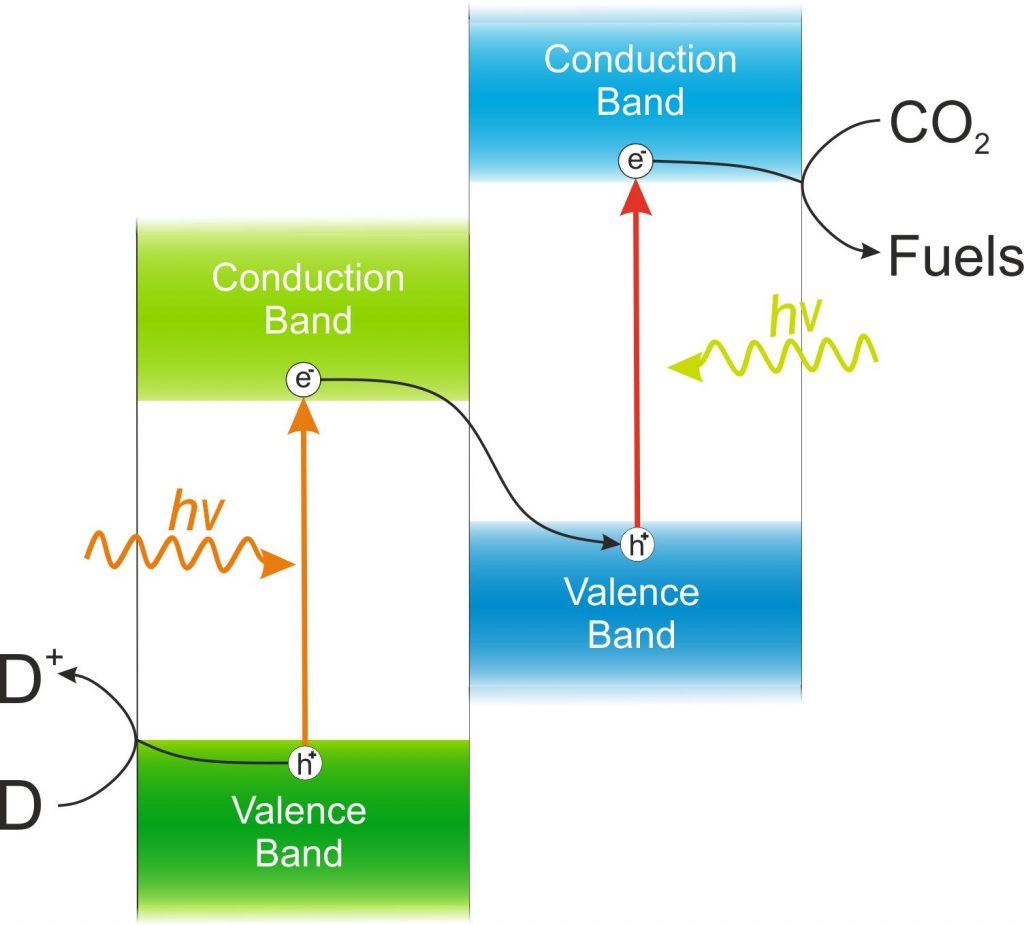Photocatalytic reduction of carbon dioxide based on p-type semiconductors
Due to the rapid growth in the industry and human population, fossil fuels, such as coal, petroleum, and natural gas, have been vastly consumed, causing energy crisis and environmental problems. As a result, generated wastes cause not only poisoning of water and air, but are also responsible for emissions of enormous amounts of greenhouse gases, in particular CO2, into the atmosphere. Therefore it is important to develop new methods of sustainable fuels production. The utilization of photocatalytic reduction of CO2 seems to be a promising strategy for clean and environmentally friendly conversion of CO2 to valuable carbon-based fuels. Moreover, this approach is particularly sustainable due to the utilization of solar energy.
Carbon dioxide is one of the most thermodynamically stable small molecules, therefore its photocatalytic reduction is complicated and difficult. Catalysts designed to facilitate this process should be characterized by sufficiently strong reducing properties. Nowadays, widely studied photocatalysts are mainly n-type semiconductors, including TiO2, WO3, ZnO, perovskites, and many others. They are characterized by strong oxidizing properties, however, usually, they do not offer sufficiently strong reducing power, unless the bandgap of these materials is very high, which limits light absorption to a deep UV region. The p-type semiconductors should offer better reduction abilities than the n-type materials. Therefore, one should look for suitable photocatalytic systems, providing electrons for CO2 reduction, rather among p- than n-type semiconductors.
The main goal of the project is therefore the development of p-type semiconducting photocatalysts, used alone or in combination with n-type semiconductors, for a more efficient solar fuels production encompassing one- and multi-electron CO2 reduction.

